Key takeaways:
- Resource networks in advocacy provide critical support, shared knowledge, and emotional connections that enhance collective efforts.
- Pro-life advocacy requires fostering emotional connections and understanding real-life stories to effect societal change.
- Building connections with stakeholders and following up can create lasting partnerships that strengthen advocacy efforts.
- Effective outreach strategies involve understanding the audience, leveraging social media, and collaborating with local organizations for broader impact.
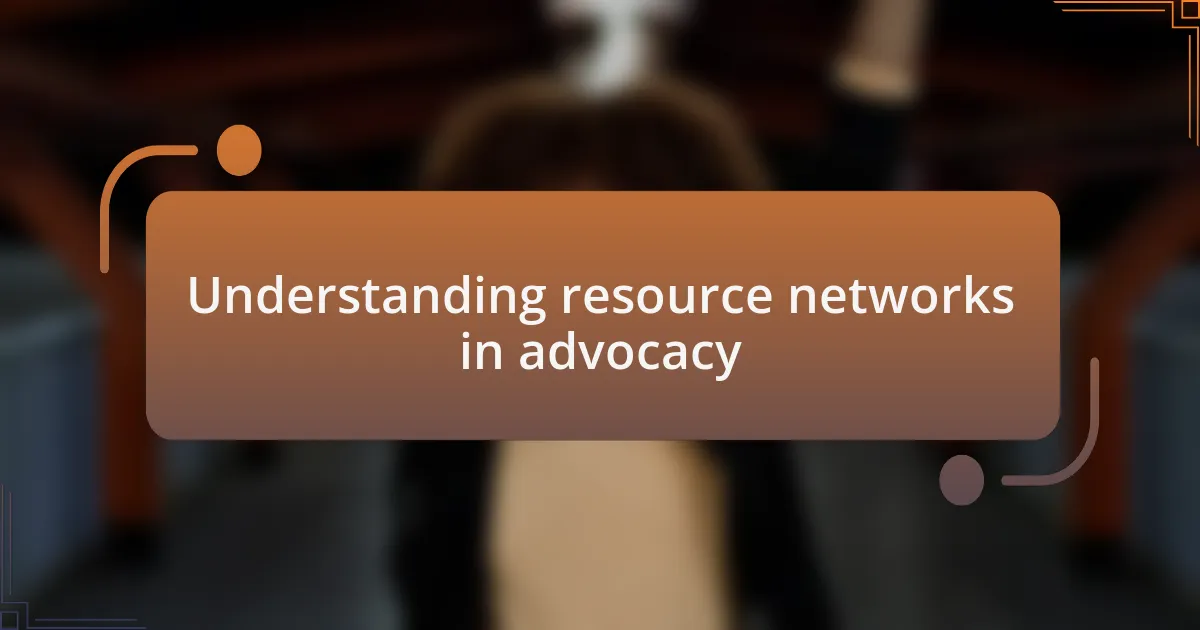
Understanding resource networks in advocacy
Resource networks in advocacy are essential for creating impactful change. From my experience, these networks are like lifelines, connecting individuals and organizations that share a common goal. When I first started building my own resource network, I realized how pivotal these connections were—often, I found support in unexpected places.
Have you ever felt overwhelmed by the challenges of advocacy? I certainly have. This is where a robust resource network shines; it provides a foundation of shared knowledge and emotional support. I recall connecting with a fellow advocate who faced similar hurdles. Our conversations not only inspired me but also equipped me with practical tools and resources to navigate my journey effectively.
Understanding the dynamics of these networks means recognizing their potential to amplify voices. Just one conversation or shared resource can spark new ideas or strategies. Each interaction shapes our collective effort, reminding me of the power of collaboration in advancing pro-life advocacy. Doesn’t that make you consider who might be missing from your network?
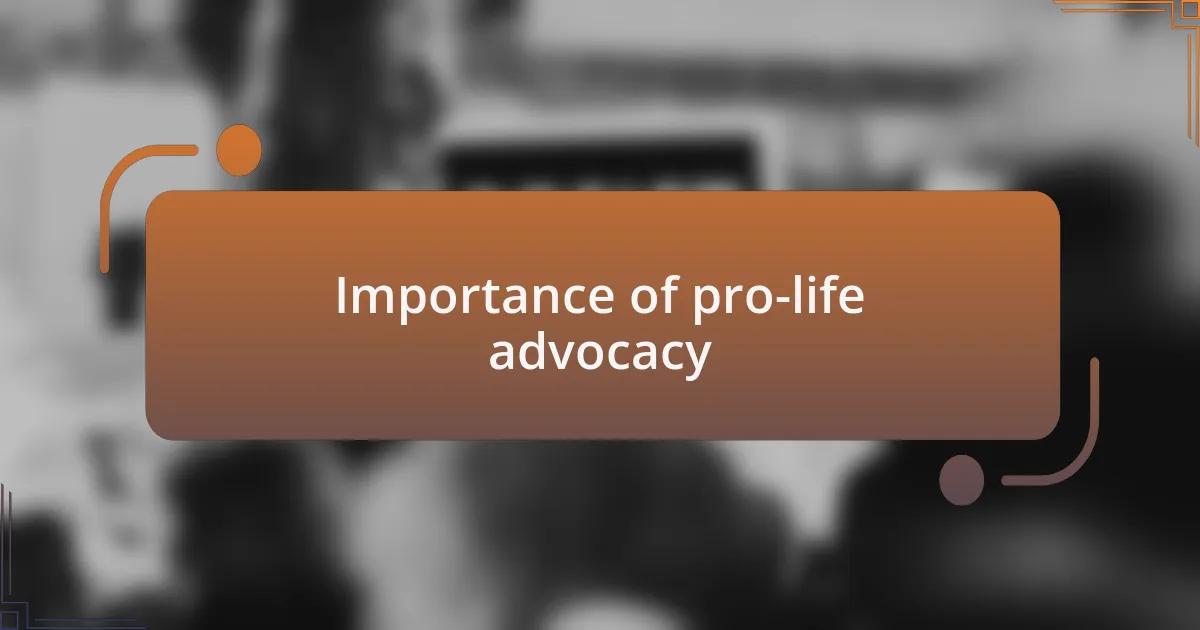
Importance of pro-life advocacy
The importance of pro-life advocacy lies in its role of defending the dignity of every human life. I remember attending a local rally, feeling the energy of passionate voices united for a cause. It was a profound moment that reinforced my belief that advocating for life is not just about policies; it’s about fostering a culture that values and protects the vulnerable, including the unborn.
Another significant aspect is the emotional connection we create with individuals affected by these issues. Once, I spoke to a woman who shared her painful experience of facing an unplanned pregnancy. Listening to her story deepened my empathy and highlighted how advocacy goes beyond statistics—it’s about real lives and real emotions. How can we ignore the impact our advocacy can have on someone’s journey toward hope?
Furthermore, pro-life advocacy serves as a catalyst for broader societal change. I’ve witnessed how grassroots efforts can influence local legislation or community attitudes. It’s inspiring to think that our voices, when united, can create ripples of change. Are we ready to harness this power to transform hearts and minds?
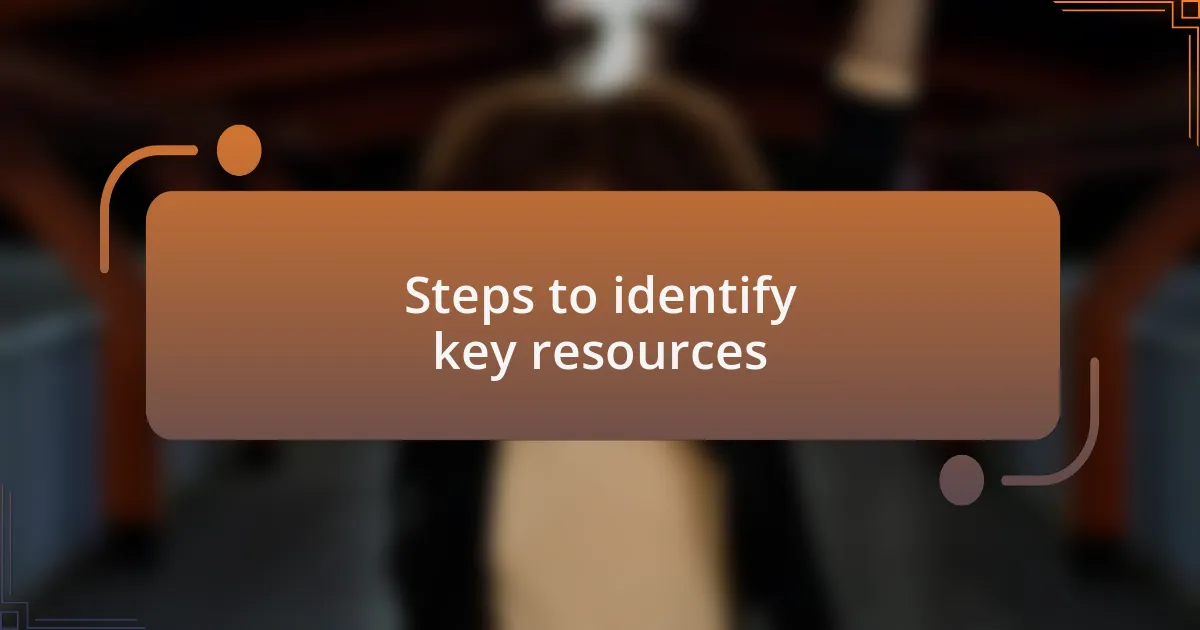
Steps to identify key resources
Identifying key resources starts with understanding your community’s needs and the issues you want to address. In my experience, I found it helpful to reach out directly to local organizations and individuals actively engaged in pro-life advocacy. This initial step not only provided insight into available resources but also helped me build relationships with like-minded advocates. Have you ever thought about what your immediate network could offer?
Next, I recommend creating a list of existing organizations, educational materials, and support services that align with your goals. I remember compiling such a list and was surprised by the wealth of information available, from crisis pregnancy centers to legal resources designed to assist women in challenging situations. By organizing these resources, it becomes easier to identify gaps in support and opportunities for collaboration. It leaves me wondering—what if everyone took the time to gather and share their resources?
Lastly, don’t underestimate the power of online platforms and social media in identifying resources. I once connected with a pro-life advocate through a Facebook group who introduced me to invaluable online training programs and networking opportunities. Engaging with others in the digital space can expand your resource network exponentially. Isn’t it thrilling to think about the potential connections waiting for us just a click away?
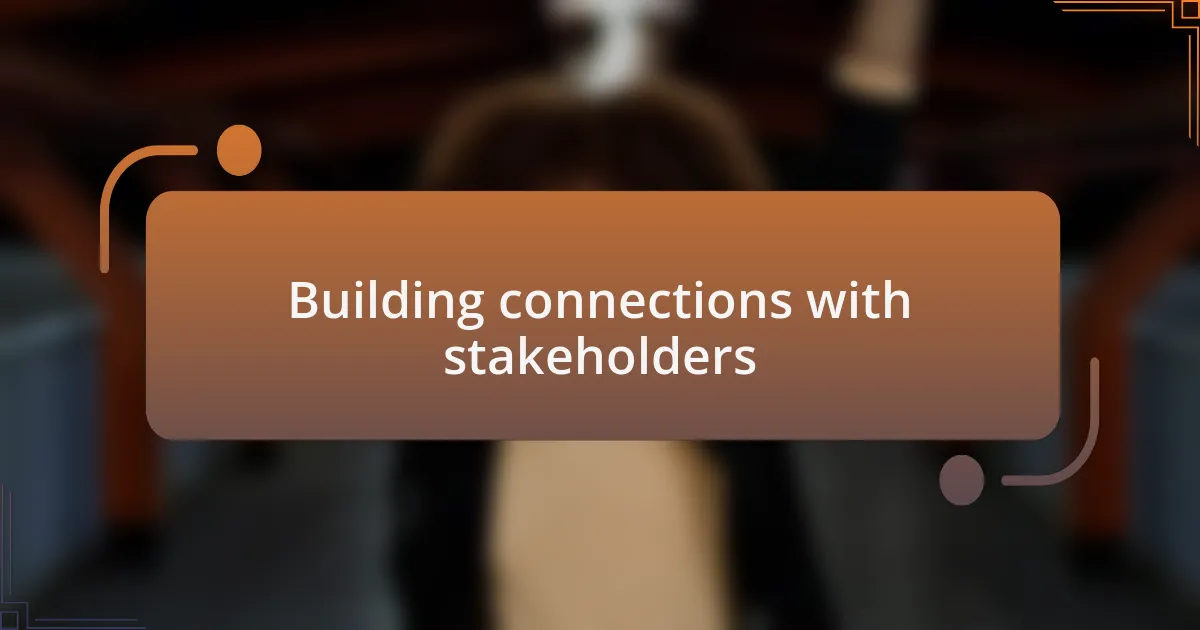
Building connections with stakeholders
Building connections with stakeholders is crucial in fostering a robust resource network. I recall attending a local pro-life conference where I had the chance to meet various stakeholders, from healthcare professionals to educators. That day, I learned that simply sharing a smile and a story could break down barriers and create a sense of camaraderie among advocates. Have you ever experienced the power of a face-to-face conversation in building trust?
Moreover, I found it invaluable to follow up with individuals after initial meetings. A quick email or a message acknowledging our discussion can go a long way in solidifying those connections. I remember one instance where following up led to a collaboration on an awareness campaign, allowing us to pool resources and increase our impact. Isn’t it fascinating how a simple gesture can open doors to new opportunities?
Lastly, actively participating in community events not only showcases your commitment but also helps you meet stakeholders organically. I learned this firsthand while volunteering at a local outreach event. The connections I made there were far more impactful than I had anticipated; they turned into lasting partnerships that enriched our advocacy efforts. What if we all took the time to immerse ourselves in our communities in this way?

Creating effective outreach strategies
Creating effective outreach strategies relies heavily on understanding your audience’s needs and preferences. I remember when I initiated a local awareness campaign; I took a step back to survey the community. This not only helped me grasp their concerns but also allowed me to tailor my messaging for maximum resonance. Have you considered how deeply knowing your audience can impact your outreach effectiveness?
One of the most effective strategies I’ve employed is leveraging social media for engagement. I’ve found that sharing personal stories about the impact of pro-life advocacy draws people in better than statistics ever could. For instance, after posting a video about a friend’s experience, I was amazed to see the conversation it sparked. Engaging with comments and questions directly made people feel valued and heard, turning casual viewers into passionate advocates. Isn’t it remarkable how online platforms can create such a sense of community?
Finally, collaborations with local entities can broaden your reach. Teaming up with nearby churches or community centers for joint events has proved essential in my outreach efforts. I recall a particularly uplifting experience where we organized a joint fundraiser that not only raised awareness but also unified different groups working toward a common goal. It just goes to show—when we come together, our collective impact can be truly transformational, don’t you think?
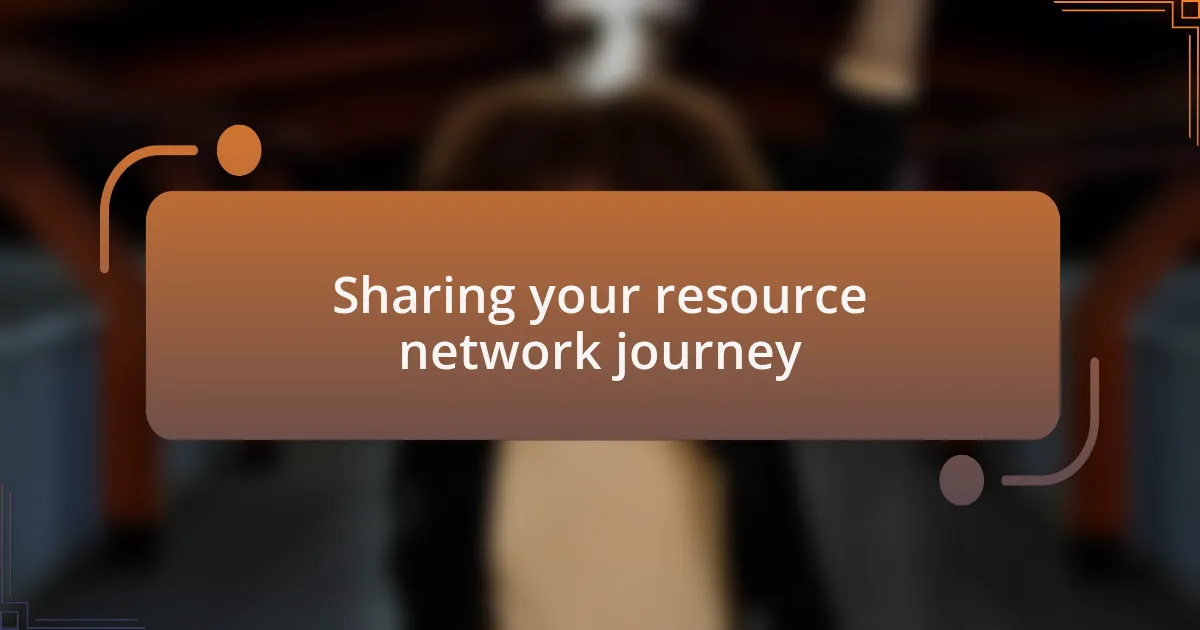
Sharing your resource network journey
Sharing the journey of building my resource network has been one of the most rewarding experiences. I still remember the moment I connected with a local support group; their warmth and openness made me realize how deeply intertwined our missions are. Have you ever felt that sense of belonging when you found others who share your passion? It changed everything for me.
One of the most unexpected joys came when I decided to document my progress. I started a blog dedicated to my resource network journey, and sharing my ups and downs resonated with many. When a reader reached out to me, sharing how my honesty encouraged them to start their own network, it was a heartening reminder that our stories can inspire others. Isn’t it incredible how vulnerability can cultivate connection?
I also learned the importance of celebrating milestones, no matter how small. After hosting my first informational meeting, I felt a surge of pride as I reflected on the friendships and alliances I had forged. By sharing these moments both online and offline, I built a vibrant community. Have you thought about how documenting your achievements can motivate you and others? The journey is indeed as significant as the destination.